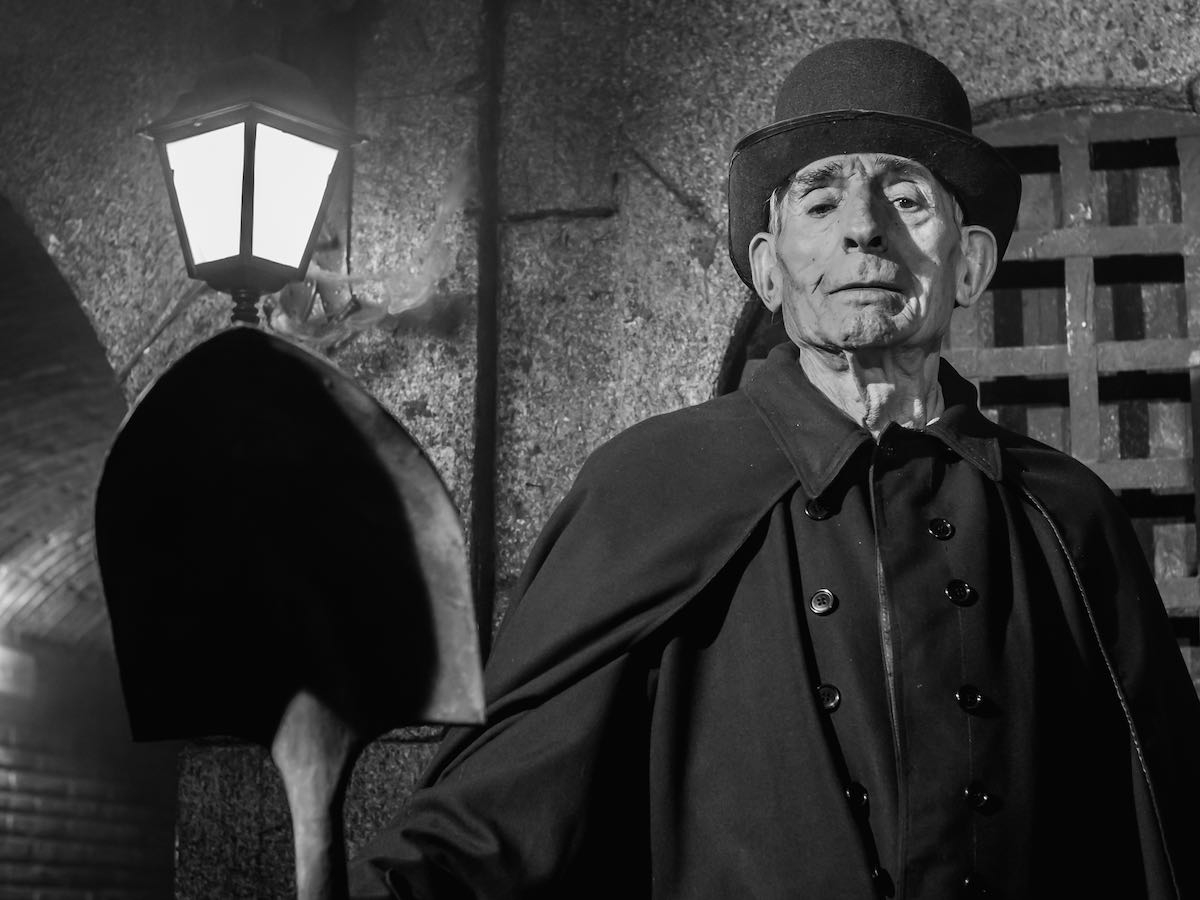
The heyday of the horror anthology film was arguably the 1960s, when everyone from B-movie maven Roger Corman (Tales of Terror) to French auteur Roger Vadim (Blood and Roses) was making them. Corman, in fact, made a string of films based on the works of Edgar Allan Poe. These "omnibus" films featured three or four discrete stories, tied together by a host or some other framing device. They appealed to the audience's episodic sensibility shaped by TV, while still getting them out to the movie theaters. These films were ostensibly inspired by EC Comics, whose titles like Tales from the Crypt established a style of ghoulish fun.
While the anthology form has been relatively dormant lately, except for some entries like the V/H/S franchise and Tales from the Hood, we can now add to it this Spanish entry that touts its exposure of first-time directors.
Vampus Horror Tales opens promisingly with a quote from Robert Louis Stevenson. The film is composed of four "necrophiliac tales" hosted by a wizened grave keeper/robber named Mr. Fettes (but who prefers to be called Vampus) played by Saturnino Garcia. Vampus buries bodies by day and exhumes them by night. He has a surprising number of visitors at his decrepit shed, among them an internet influencer and a doctor, all of whom he dispatches by stabbing them, or bludgeoning them, or sacrificing them to his demon pet Toby. Don't turn your back on this old coot. Some he feeds first, which is where the hot dogs come in. Besides his official duties, Vampus runs a food truck. It specializes in hot dogs. And where does he get the meat…?
You get the idea.
In his connecting segments, Vampus breaks the fourth wall and speaks directly to his audience, calling us "little ones." He chatters on, setting us up for the tales by admonishing, advising, and offering aphorisms ("You don't beg for love. You have to earn it"). He works from a large dust-laden comic book, and each episode opens and ends in a drawing that morphs into or out of live action, a device used in everything from The Wild, Wild West to George Romero's Creepshow. The trouble is, the drawings In Vampus Horror Tales are wispy sketches, and lack the high-contrast dynamism of a real comic panel. Sadly, this device, like the most of the movie, is warmed over and passionless.
All four stories take place on Halloween night, and concern love, lust, and betrayal (and hot dogs show up often). It's filmed on video and is entirely in black and white, an odd choice for a mise en scéne so blood-drenched. Throats are cut and heads bashed in, and "blood" spurts out and runs black, as if each character has spouted chocolate syrup.
To be fair, the stories improve as they go along. Vistas widen, effort is obvious. The first, "The Wedding," directed by Manuel Martínez Velasco, is the flattest. A bride in her gown and the wedding's witness find themselves in a sort of purgatory from which they cannot escape and they don't remember coming to, a room below the one in which the actual wedding is taking place. The set-up is little more than two people talking, and the set resembles—and might well be—a warehouse of stage props (a huge teddy bear is an irrelevant set piece).
"Birthday," directed by Erika Elizalde, is next. Same-sex lovers are stranded in a malfunctioning fun house with a masked killer on the loose. The situation is clichéd and uninspired, and looks filmed in the same warehouse as "The Wedding."
"Second Date," directed by Isaac Berrocal, is more ambitious. A man takes a blind woman on a country retreat in order to exploit her disability in a kinky game of cat and mouse. This one could've used more of the EC Comics spirit. EC Comics, which was closed down by Congressional intervention in the 1950s, were notorious not only for their gore but for their subversive sense of humor (EC eventually begat Mad magazine). They dealt in irony and twist endings: turnabout was always fair play, the predator could easily become the prey. "Second Date" suffers from the same lack of cleverness as most of Vampus Horror Tales. Villain and victim are tagged from the get-go, and the situation is resolved not with wit but with carnage.
The fourth and final segment, "Lineage," directed by Piter Moreira, is the most inventive. A Hazmat-suited couple arrive at an abandoned sanitorium, fleeing a pandemic. The wife is inflected and has become a vampire; she's here to either dry out or die. "Lineage" uses more exterior shots, and contains genuine narrative surprises. It has little dialogue but true emotional heft and an array of unpredictable characters. Many of the images attain a haunting moodiness that are reminiscent of Luc Besson's Le Dernier Combat.
But on the whole, Vampus Horror Tales disappoints, which is hard for a film of this sort to do. Horror audiences accept a lot. They come ready for shocks and scares, and look past low budgets and incoherent plots. Fans don't have to be convinced, they just have to be entertained. Horror audiences are there, in every sense of the word. All the filmmaker needs to do is show engagement with the material, some ingenuity with not a lot of money, and a healthy respect for surprises and suspense. The filmmaker fails only due to a lack of conviction.
Vampus Horror Tales lacks that conviction.
(For the record, Victor Matellano directs the "Vampus" interludes.)
VAMPUS HORROR TALES, 142 minutes, black and white, from Spain. Released by Uncork'd Entertainment February 17, 2023 on digital and on demand.
Mr. Kozlowski teaches literature and film. His short stories are collected in a volume titled Home at Last.
